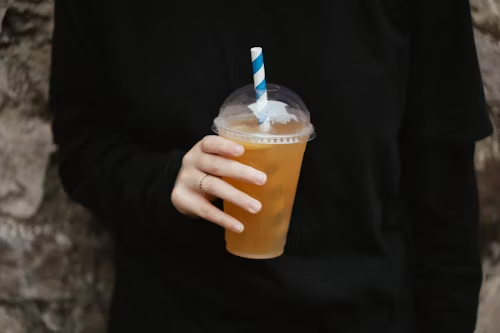In the face of growing environmental awareness, the demand for sustainable alternatives to everyday products has increased significantly. One area seeing notable change is the use of disposable drinking straws. Traditionally made from plastic, straws have become symbolic of the global fight against pollution. As consumers and businesses seek more eco-conscious choices, companies like AnzhuCraft have stepped up by offering biodegradable and compostable alternatives made from bamboo, wood, and paper. These materials are not only functional but also contribute to reducing our ecological footprint. When exploring the types of drinking straws available today, understanding the advantages and limitations of each material is essential for making responsible choices.
The Rise of Eco-Friendly Drinking Straws
Plastic straws, once ubiquitous in cafes, restaurants, and homes, have fallen out of favor due to their contribution to environmental degradation. Lightweight and non-biodegradable, they often end up in oceans and waterways, harming marine life. With bans and restrictions being implemented worldwide, the need for sustainable alternatives has never been greater.
AnzhuCraft, a Chinese manufacturer committed to green practices, specializes in eco-friendly disposable tableware. By focusing on natural materials like bamboo, wood, and paper, AnzhuCraft aligns itself with the global movement toward sustainable consumption and waste reduction. Let’s explore the most popular environmentally friendly materials now used in straw production.
Bamboo Straws: Durable and Natural
Bamboo is one of the fastest-growing plants on Earth, making it a highly renewable resource. Straws made from bamboo are not only reusable but also biodegradable and compostable.
Benefits:
- Reusable: When properly cleaned and maintained, bamboo straws can be used multiple times.
- Biodegradable: Once disposed of, they naturally decompose within months.
- Aesthetic Appeal: Bamboo straws offer a natural, rustic look that complements eco-conscious branding.
Drawbacks:
- Maintenance Required: These straws need to be washed thoroughly to prevent mold or bacterial growth.
- Cost: They are typically more expensive than single-use options, although cost-effective in the long term due to their reusability.
Bamboo straws are ideal for businesses and individuals looking to minimize environmental impact while offering a stylish and sustainable product.
Wooden Straws: Solid and Compostable
Wooden drinking straws are another strong contender in the eco-friendly space. Typically made from FSC-certified birch wood, they are designed for single use but are 100% compostable.
Advantages:
- Compostable: Decomposes naturally in composting conditions.
- Non-toxic: Free from chemicals and coatings, safe for use with hot or cold beverages.
- Sturdy: Unlike some paper straws, wooden straws retain their shape and function without getting soggy.
Considerations:
- Texture: Some users may find wooden straws slightly rough compared to other materials.
- Cost vs. Paper: Slightly more expensive than paper straws, though sturdier.
Wooden straws are a great option for takeaway services and events that want to balance functionality and sustainability without the need for reusability.
Paper Straws: Affordable and Widely Accepted
Paper straws are the most widely adopted alternative to plastic, especially in the food and beverage industry. These straws are made from food-grade, biodegradable paper and are often treated with water-based adhesives.
Pros:
- Biodegradable: Can break down in a matter of weeks under composting conditions.
- Cost-effective: Relatively inexpensive, making them ideal for mass usage.
- Customizable: Available in various colors, patterns, and sizes, allowing for branding opportunities.
Cons:
- Durability: Known to become soggy after extended use, especially in hot drinks.
- Single-use: Not suitable for multiple uses due to their structural limitations.
Paper straws are the most economical and accessible option for businesses looking to quickly transition away from plastic while maintaining low costs.
Comparing Eco-Friendly Straw Materials
| Material | Reusability | Biodegradability | Durability | Cost |
| Bamboo | High | Excellent | High | Moderate |
| Wood | Low | Excellent | Moderate | Moderate |
| Paper | Low | Good | Low | Low |
Each of these materials serves different needs, and the right choice depends on the intended use, budget, and environmental goals of the consumer or business.
Regulatory and Consumer Trends
Governments across the globe are reinforcing the shift toward sustainable products. From the European Union’s single-use plastics directive to local municipality bans in North America and Asia, there’s growing pressure on businesses to adopt greener practices.
Consumers are also playing a significant role by favoring brands that demonstrate environmental responsibility. Offering biodegradable straws made from bamboo, wood, or paper not only complies with regulations but also enhances brand reputation and customer loyalty.
Why Choose AnzhuCraft?
As a trusted supplier, AnzhuCraft stands out for its dedication to sustainability and quality. Their range of biodegradable tableware is crafted from ethically sourced materials, ensuring both environmental and consumer safety. Whether you are a food service provider, retailer, or event organizer, AnzhuCraft offers customized and bulk solutions tailored to your needs.
By focusing on green innovation, AnzhuCraft helps clients make informed decisions in line with global environmental standards. Their commitment to quality control, timely delivery, and customer service makes them a reliable partner for eco-conscious products.
To explore their full product catalog, including bamboo, wood, and paper drinking straws, visit anzhucraft.com today.

